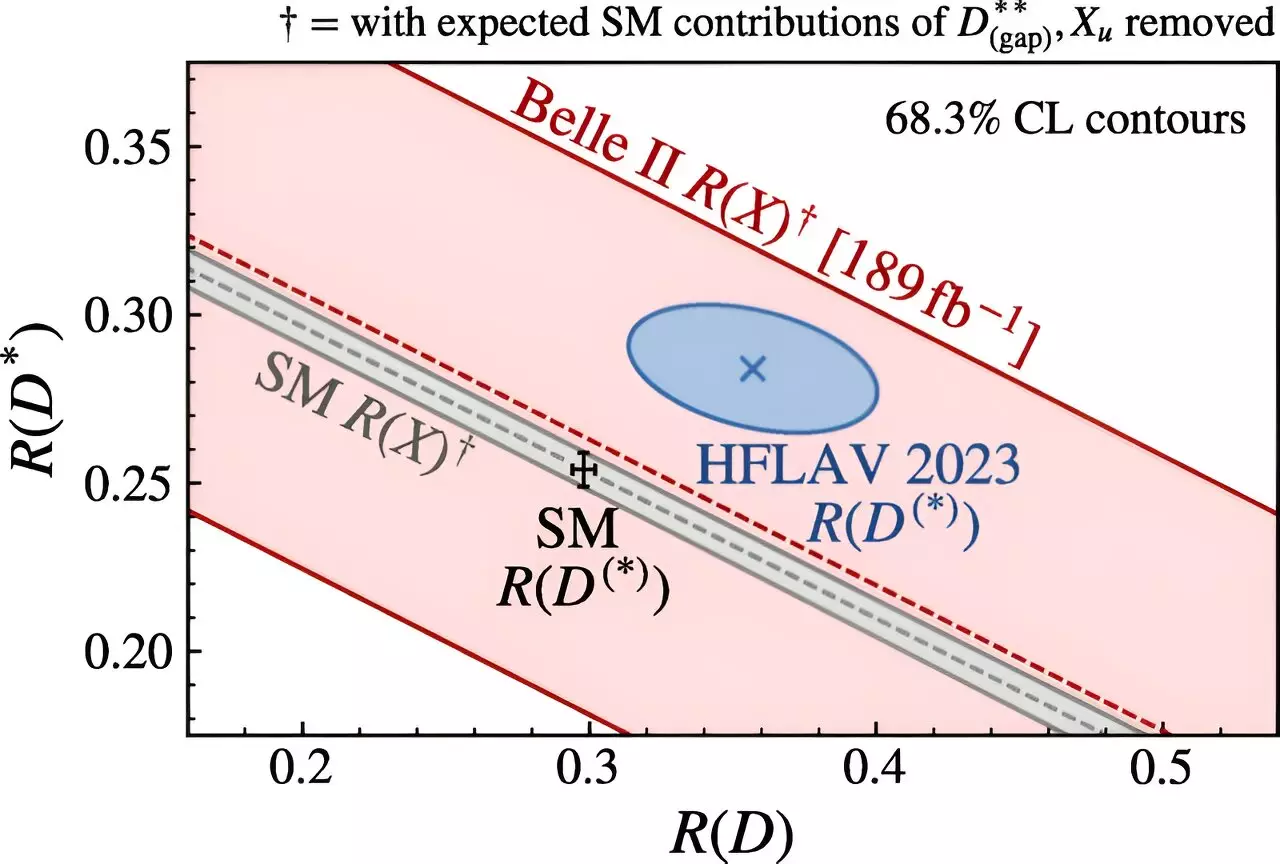In the realm of particle physics, experiments like Belle II play a transformative role in shaping our understanding of the universe. Located at the High Energy Accelerator Research Organization (KEK) in Tsukuba, Japan, Belle II leverages the capabilities of the SuperKEKB particle collider to probe the depths of the standard model of particle physics, aiming to uncover nuances that may elude our current frameworks. The experiment primarily focuses on measuring weak-interaction parameters, studying exotic hadrons, and initiating an inquiry into phenomena that lie beyond the established laws of physics.
Belle II has taken an ambitious step forward with its recent publication in Physical Review Letters. The collaborative effort documented a groundbreaking first direct measurement of the tau-to-light-lepton ratio (τ(ℓ/ℓ)) regarding inclusive B-meson branching fractions. This pivotal analysis is not just another milestone; it’s a deliberate attempt to validate the fundamental principle of lepton universality, a tenet which posits that charged leptons such as electrons, muons, and tau particles interact in identical ways under the weak and electromagnetic forces.
The Quest for Lepton Universality
Lepton universality implies that all charged leptons should exhibit the same coupling to the weak force. However, inconsistencies in existing experimental data raised doubts about this concept, motivating researchers to directly compare the behavior of tau particles with their lighter counterparts, electron and muon. The ability to isolate the processes governing these disparate particle groups is integral to verifying—or challenging—the current understanding of particle interactions.
Karim Trabelsi, the spokesperson for the Belle II Collaboration, illustrates the significance of their endeavor: “Any deviation from lepton universality could suggest the existence of new physics outside the standard model.” The constraints of previous studies relied on exclusive decays, which observe interactions that involve a single charmed meson. However, Belle II’s innovative approach encompasses inclusive decays, allowing for a broader analysis that includes multiple hadrons and various decay paths, enhancing the chances of detecting anomalies that may signify lepton universality violations.
Methodological Innovations
To execute this ambitious analysis, Belle II utilized the advanced capabilities of its detector to process high-quality data from electron-positron collisions. By focusing on pairs of B mesons produced in these interactions, the collaboration could reconstruct events in which a light lepton arose from the decay of one B meson or the rapid decay of a tau particle from the other. This dual strategy markedly improves the precision of their measurements.
A core aspect of their analysis lies in the nuanced handling of momentum distributions. Notably, leptons originating from tau decay tend to carry significantly lower momentum compared to those stemming from B mesons. This characteristic, coupled with the presence of additional neutrinos in tau decay processes, prompts a distinct energy signature that the team can leverage for more accurate measurements. Through rigorous calibration against subsidiary data samples, the Belle II team has developed a methodology that not only minimizes systematic uncertainties but also lays a strong foundation for future explorations.
Navigating Uncertainties and Future Prospects
Despite the complexities and uncertainties inherent in this groundbreaking measurement, the Belle II Collaboration remains optimistic. Trabelsi acknowledges the challenges but emphasizes the potential of their findings, stating, “While our current results align with the predictions of the standard model, they also coincide with anomalies detected in exclusive decay processes.” As the collaboration continues to accumulate data, the hope is to refine their measurements further, providing a more comprehensive probe into the principles of lepton universality.
This progressive approach, combining both inclusive and exclusive measurements, is critical as it positions Belle II at the forefront of particle physics research. The implications of the findings and their ability to suggest new physics are profound. For instance, they could provide insights into particles that have yet to be identified, potentially redefining foundational concepts in physics.
Charting Unknown Territories
As the Belle II experiment marches forward, there remains a palpable excitement in the scientific community. The opportunity to observe and understand the subtle deviations from established principles like lepton universality may herald a new era in particle physics. The anticipation surrounding the analysis of future data sets hints at a broader quest not just for answers but for radical re-imaginings of the forces that shape our universe. There’s no doubt that Belle II will continue to be a critical player in this exhilarating journey through the complexities of matter and energy, pushing us closer to the edge of the unexplored.


Leave a Reply